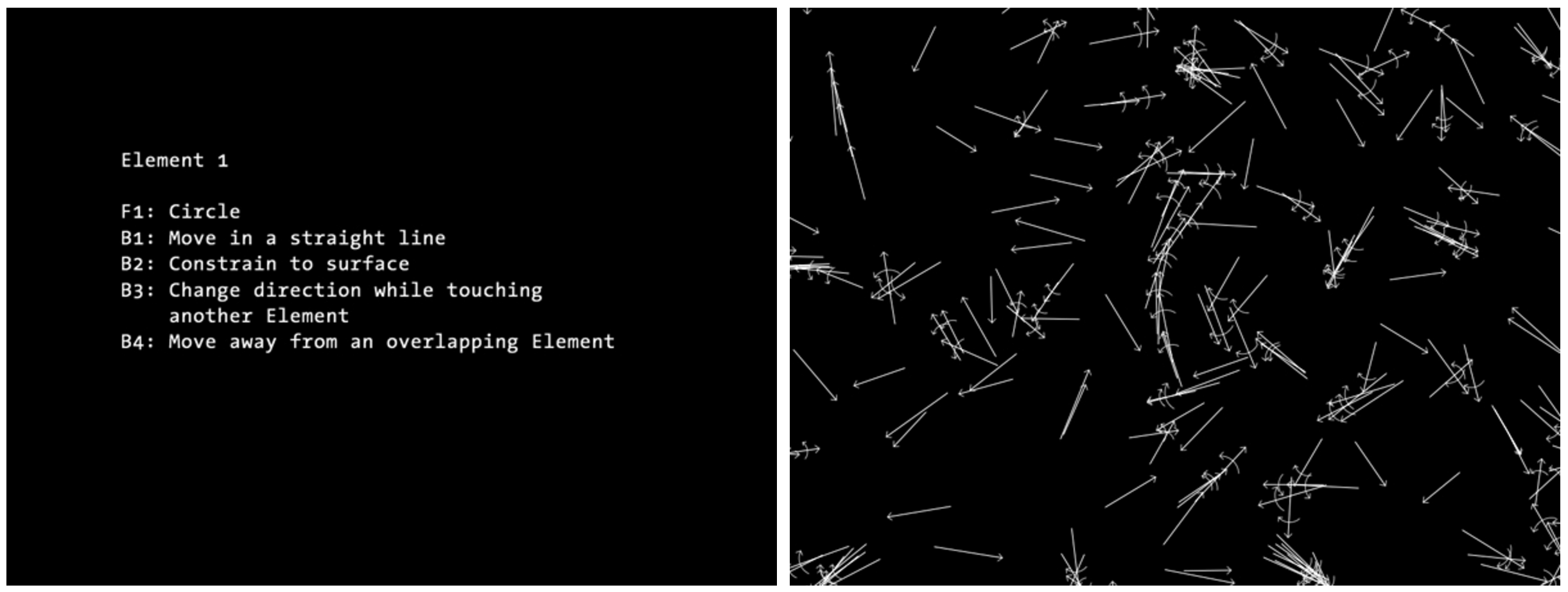Krawleb-LookingOutwards02

For this week, I’ve chosen to write about one of the first computational design projects I ever heard about, and one that certainly changed the way I understood programming forever. While enrolled in 15-104, we were working in processing, which felt enormously intuitive for me. I had encountered programming in an introductory class in high school, but it had always been so deeply rooted in a perspective of math and execution of function that it never really grew on me and I found it difficult. Processing flipped the programming metaphor on its head, establishing a visual feedback system that I immediately understood. Naturally I was curious about who had created this amazing tool and quickly stumbled upon Casey Reas portfolio. I was enchanted by the intricate and pseudo-natural patterning in his work, but couldn’t unpack it visually. Then I found his “Process Compendium” which describes the algorithms behind (much of) his work in plain english, a logic-based framework for creating interactions infinitely more complex than each component. This compendium also explains likely the name behind ‘Processing’ as the method of translating a ruleset or process into a coded algorithm which creates an output. This collection of projects and the mindset it implied is what really showed me how powerful programming is as a creative medium, and how it allows artists and designs to work in ways so far beyond the capabilities of their owns hands, in an orchestration of thoughts and rules to make beautiful systems. Since then, I’ve followed this theme both in programming based work, as well as learning about natural generative or emergent systems as a lens to observe, learn from, and emulate nature.